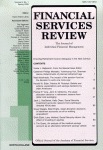Financial Planning and College Saving Recommendations
Let's Set Things Straight
DOI:
https://doi.org/10.1016/S1057-0810(97)90031-7Abstract
Continuing increases in the cost of higher education, along with an ever-changing financial aid environment, suggest that financial planning is more important than ever for those seeking to send a child to college.One commonly used aid to thefinancial planner is the "college savings table, " which is ubiquitous in both thepopularpress, as well as the literature geared towardfinancial planners. Although they are intended to simplify the planning process, some of these tables may lead to misallocation of family resources. The tables generally purport to show how much money parents must save monthly tofund four years of college at a specifiedfuture date. We demonstrate that these tables often employflawed methodology. Upon correction (and given reasonable assumptions about investor behavior, growth rates in tuition costs, and investment yields), the monthly savings necessary tofund a given level of college expenses can be substantially less than those reported. Additionally, published tables typically provide the planner with a limited range of investment yield assumptions, suggesting a narrow range of porrfolio possibilities. We provide a series of tables which allow the financial planner to estimate required savings for various combinations of investment yields and tuition growth rates.
Downloads
Published
How to Cite
Issue
Section
License
Copyright (c) 1997 JAI Press Inc.

This work is licensed under a Creative Commons Attribution-NonCommercial 4.0 International License.
Author(s) retain copyright and grant the Journal right of first publication with the work simultaneously licensed under a Creative Commons Attribution-NonCommercial 4.0 International License that allows to share the work with an acknowledgment of the work's authorship and initial publication in this Journal.
This license allows the author to remix, tweak, and build upon the original work non-commercially. The new work(s) must be non-commercial and acknowledge the original work.


